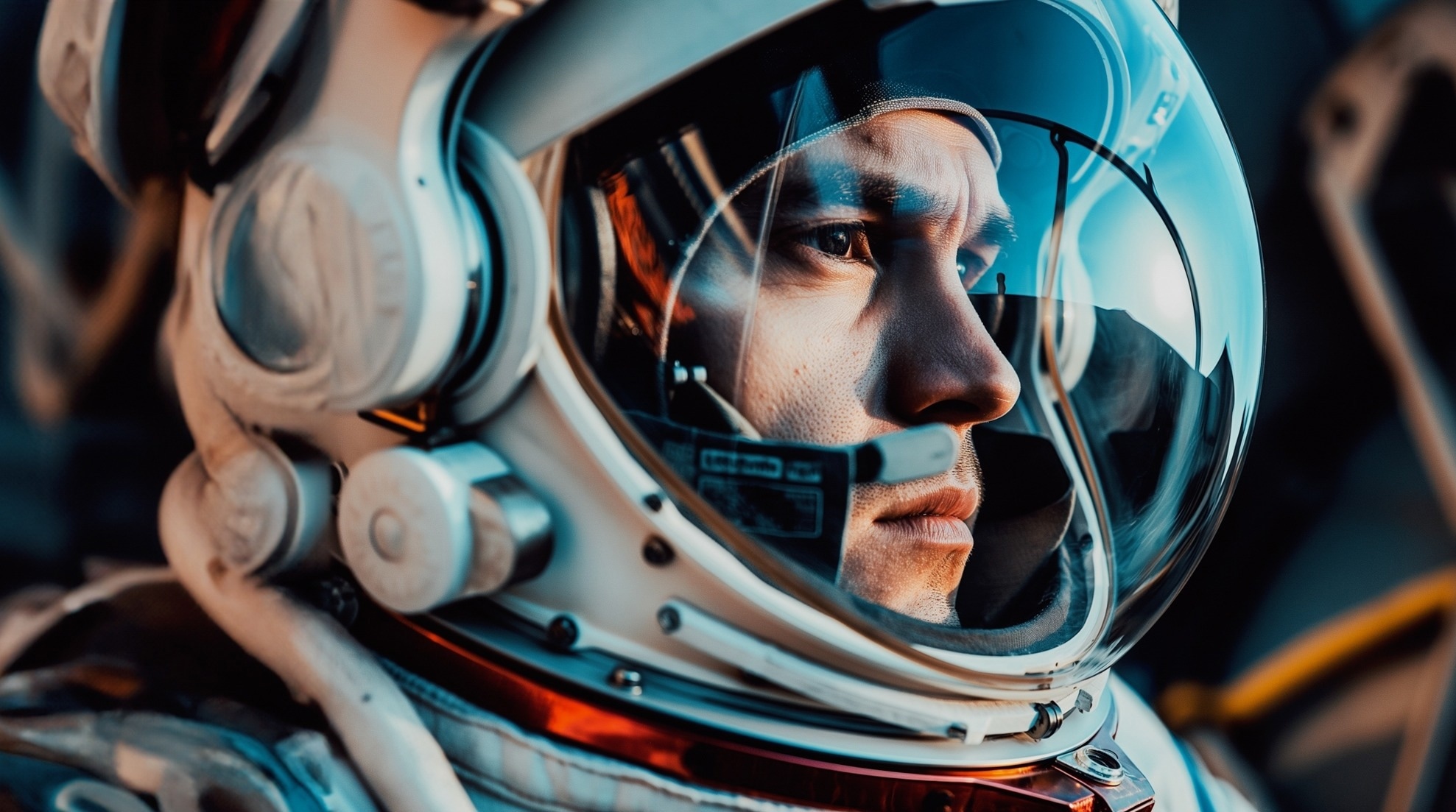In a recent study published in the journal Antioxidants, researchers analyzed muscle samples from long-duration mission (LDM) and short-duration mission (SDM) astronauts to investigate the effects of spaceflight on muscle protein nitrosylation. They found that LDM astronauts showed close-to-normal expression of sarcolemmal NOS1 (short for nitric oxide synthase type-1) and over-nitrosylation of functional proteins post- vs. preflight, indicating muscle adaptation. Further, SDM astronauts displayed s-nitrosylation of glycolytic flux proteins, tricarboxylic acid (TCA) cycle proteins, and respiratory chain proteins, indicating impaired adenosine triphosphate (ATP) production and muscle contraction.
 Study: Nitrosative Stress in Astronaut Skeletal Muscle in Spaceflight. Image Credit: Summit Art Creations / Shutterstock
Study: Nitrosative Stress in Astronaut Skeletal Muscle in Spaceflight. Image Credit: Summit Art Creations / Shutterstock
Background
Astronauts, particularly during LDMs, are shown to undergo muscle loss and function decline, the mechanisms underlying which are poorly understood. Recent research calls for focused studies on molecular mechanisms of musculoskeletal disuse and adaptation, muscle and bone loss, nutrition, and exercise optimization as countermeasures for future deep space explorations. Long-term exposure to space conditions is shown to induce changes in redox genes and pathways, leading to oxidative/nitrosative stress and muscle wasting. Skeletal muscle, a major source of nitric oxide (NO) in the body, is shown to undergo significant physiological changes in space, affecting development, growth, and exercise tolerance.
In the present study, researchers report the evidence from the MUSCLE IOPSY study conducted on the International Space Station (ISS), which explored sarcolemmal NOS1 localization patterns and differential changes in SNO protein levels in astronauts' soleus muscles, providing insights into the impact of microgravity on muscle physiology and potential biomarkers for monitoring muscle health during spaceflight.
About the study
The present study included a total of six male ISS crew members from American, Japanese, and European space agencies, with one participant in an SDM (9 days) and five in an LDM (~180 days). The SDM astronaut did not undertake inflight exercise, as opposed to LDM astronauts. Body mass indices and exercise countermeasure details were obtained from the participants. Pre- and post-flight biopsy samples from the right soleus muscle (a major calf skeletal muscle) were collected and analyzed. Cryosections from frozen tissue blocks were immunostained for NOS1, visualized with fluorescent secondary antibodies, and imaged using a confocal microscope for subcellular signal quantification and subjected to S-nitrosoproteomics using 2-D CyDye-Maleimide differential gel electrophoresis (Nitro-DIGE). Protein identification was performed by matrix-assisted laser desorption/ionization time-of-flight mass spectrometry (MALDI-ToF MS), and immunoblotting was conducted for selected proteins. Ribonucleic acid (RNA) was extracted from the samples, and quantitative PCR (qPCR) was carried out to analyze gene expression levels of NOS1. Statistical analysis involved the use of the Pearson–D'Augustino normality test, paired and unpaired Student's t-test, Mann–Whitney test, and the application of false discovery rate.
Results and discussion
Two of the three LDM astronauts showed a 2- to 2.5-fold change in NOS1 transcript levels in soleus muscle samples post-flight compared to preflight, while no significant change was observed in the SDM astronaut. Immunolocalization analysis revealed a reduction in sarcolemma NOS1 in the SDM astronaut sample post-flight compared to preflight. Conversely, in at least two of the LDM astronauts, there was an increase in subsarcolemmal NOS1 localization post-flight. However, while one LDM astronaut showed no change, another LDM astronaut showed reduced NOS1 post-flight. The decrease observed in the SDM astronaut was prevented in LDM astronauts, indicating the potential positive effects of targeted inflight exercise on subsarcolemmal NOS1 expression in the soleus muscle. Additionally, quantitative analysis of NOS1 protein levels in soleus lysates showed changes in LDM astronauts compared to the one in an SDM.
Nitro-DIGE analysis showed differential nitrosylation patterns in proteins associated with energy metabolism, stress response, and muscle contraction. In the SDM sample, eight proteins showed significant changes in both nitrosylation and abundance. However, in the LDM samples, only one protein exhibited differential nitrosylation. Notably, in SDM, fructose-bisphosphate aldolase A and myosin light chain 3 were over-nitrosylated, while in LDM, UQCRC1 (short for Human ubiquinol cytochrome c reductase core protein 1) showed decreased nitrosylation despite increased abundance. Immunoblotting indicated decreased levels of alcohol dehydrogenase 5/S-nitrosoglutathione reductase (ADH5/GSNOR) and thioredoxin reductase 1 (TXNRD1) in both SDM and LDM astronauts, with significant changes observed in ADH5 for LDM.
These findings suggest complex alterations in nitrosylation and protein abundance in response to microgravity exposure, potentially implicating nitrosative stress pathways in muscle adaptation during spaceflight. The study limitations include a limited number of participants, limited biopsy samples, and the absence of inflight non-exercise controls due to ethical constraints.
Conclusion
In summary, the study revealed that while the inflight exercise protocols on the ISS may partially mitigate sarcolemmal NOS1 dislocation in the calf muscle, over-nitrosylation of crucial muscle proteins and decreased levels of denitrosylase enzymes indicate impaired redox homeostasis in astronaut's muscles regardless of microgravity exposure duration. Further analysis of muscle protein nitrosylation patterns across different muscle groups is warranted to determine whether these patterns reflect protective or detrimental mechanisms in microgravity adaptation. Future inflight countermeasures and recovery protocols should consider nutritional supplementation to minimize muscular nitrosative stress and ensure crew health and performance during deep space exploration missions.